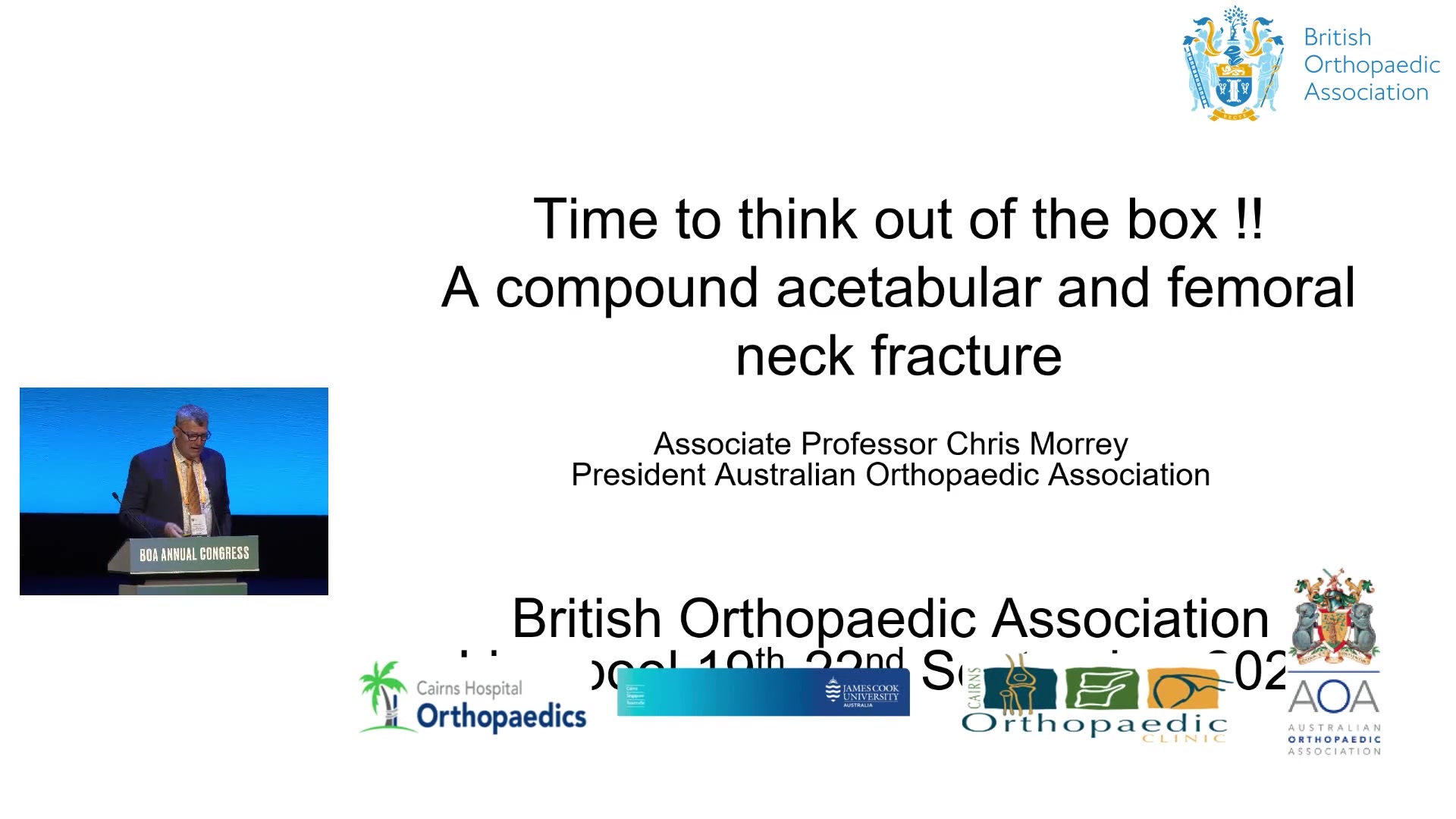Please login to view this media

- Talk
- 20/09/2023
- UK
Time To Think Out Of The Box!! A Compound Acetabular and Femoral Neck Fracture
Description
In this case presentation, Chris Morrey discusses a complex orthopedic case involving a 17-year-old male who sustained severe injuries from a motor vehicle accident. The patient, who was unrestrained in the car, suffered an isolated left acetabular and femoral injury after the vehicle collided with a stop sign, resulting in significant damage to the hip joint. The case highlights the importance of asking for assistance in challenging situations and taking careful steps when managing such severe trauma, particularly in young patients.
The discussion begins with a brief overview of the case and the urgency presented by the patient’s injuries. Morrey recounts his conversation with a junior colleague, who was on call and faced the difficult situation of managing multiple compound fractures while simultaneously addressing the new emergency. The X-rays reveal catastrophic damage to the hip joint, necessitating urgent surgical intervention.
Throughout the presentation, Morrey emphasizes the need for collaboration and expert opinions in complex cases. After consulting with leading figures in orthopedic surgery, the consensus is to focus on stabilizing the patient rather than rushing into further procedures that could complicate the situation. The strategy outlined involves initially addressing soft tissue healing and preparing for reconstruction at a later date, instead of aggressive intervention at the outset.
As the patient progresses, Morrey details the surgical approach taken to reconstruct the posterior column and wall of the acetabulum using a femoral head graft, followed by the insertion of a cement spacer. The talk illustrates the pivotal role of soft tissue healing in orthopedics and the balance required between intervention and conservative management. Eventually, after nine months of healing, a total hip replacement is planned, leading to a satisfactory outcome for the patient despite ongoing challenges such as a leg length discrepancy.
Morrey concludes with a broader message about the value of seeking help in medicine, the importance of patience in treatment planning and execution, and the need to prioritize soft tissue considerations in trauma management.